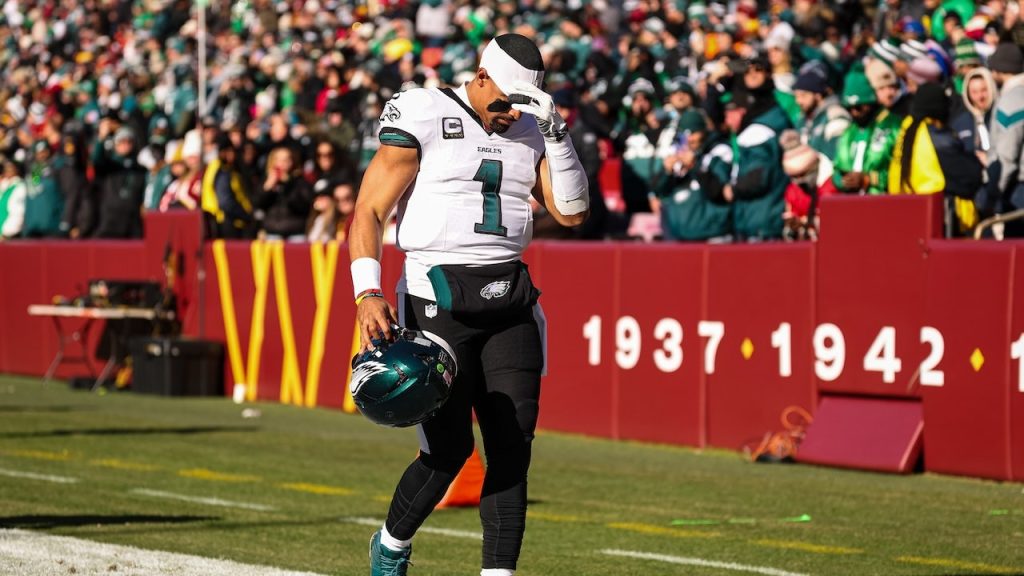Jalen Hurts’s return to the field for the Philadelphia Eagles’ Wild Card playoff game against the Green Bay Packers marks a significant milestone in his recovery from a concussion sustained during Week 16 against the Washington Commanders. Hurts’s recollection of the incident remains hazy, a testament to the disorienting nature of such injuries. His description of being “out of routine” underscores the disruption a concussion can cause, forcing athletes to navigate unfamiliar physical and mental challenges. Hurts’s reliance on his faith during this period highlights the personal coping mechanisms individuals employ when facing adversity. His experience adds another chapter to the ongoing narrative of concussions in the NFL, a concern that has gained increased attention and scrutiny in recent years.
The 2024 NFL season has been particularly marred by a series of high-profile concussion cases, raising significant concerns about player safety and the league’s protocols. Tua Tagovailoa’s multiple concussions, including a particularly alarming incident against the Buffalo Bills, fueled national debate about the long-term health risks associated with repeated head trauma in football. The incident sparked calls for Tagovailoa’s retirement, highlighting the difficult decisions athletes face when balancing their passion for the game with the potential for long-term health consequences. These incidents underscore the urgent need for improved preventative measures and more stringent protocols to protect players from the devastating impact of concussions.
Trevor Lawrence’s season-ending concussion, resulting from an illegal hit, further emphasizes the vulnerability of quarterbacks and the importance of enforcing rules designed to protect them. The subsequent suspension of the player responsible for the hit reflects a growing intolerance for reckless plays that endanger player safety. Chris Olave’s concussion, requiring him to be carted off the field, and JD Bertrand’s injury the following week demonstrate the pervasive nature of concussions across different positions and teams. These incidents serve as a stark reminder of the inherent risks associated with football and the ongoing need for improved safety measures.
The tragic death of Alabama A&M University football player Medrick Burnett Jr. following a head injury casts a somber shadow over the sport, highlighting the potentially fatal consequences of these injuries. Burnett’s death serves as a stark reminder of the inherent dangers of the game and the importance of prioritizing player safety at all levels of competition. This tragic event underscores the need for continued research and development of protective equipment and protocols to mitigate the risks associated with head trauma in football.
The prevalence of concussions extends beyond the professional ranks, impacting high school and youth players as well. The case of Caden Tellier, a high school quarterback who suffered a head injury during a game, and the tragic death of Cohen Craddock, a 13-year-old who sustained a fatal head injury during practice, underscore the vulnerability of young athletes. These incidents highlight the critical importance of implementing safety measures and educating coaches, players, and parents about the risks and signs of concussions at all levels of the sport.
The cumulative effect of these incidents creates a compelling argument for continued vigilance and proactive measures to address the concussion crisis in football. The NFL and other governing bodies must prioritize player safety by implementing stricter protocols, investing in research, and fostering a culture of awareness and responsibility. The long-term health and well-being of athletes must take precedence over the competitive aspects of the game. Only through collective effort and a commitment to change can the sport effectively address this critical issue and ensure the safety of its players at all levels.

